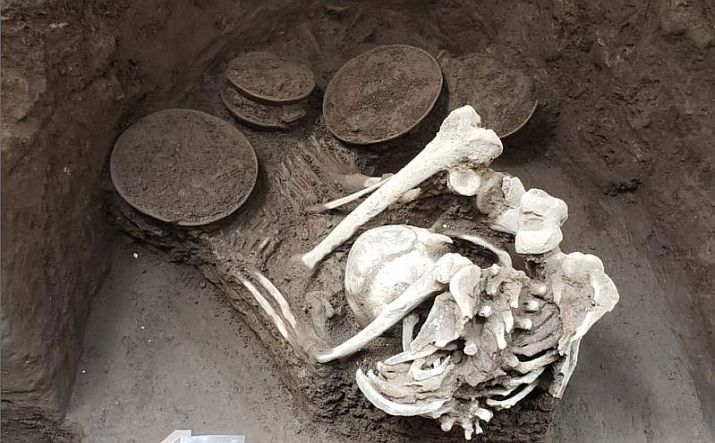
Archaeologists from the National Institute of Anthropology and History (INAH) have uncovered a Teotihuacano village in the Tlatelolco area of Mexico City. The village dates from around 450-650 AD, during the Classic period in the Late Xolalpan-Metepec phases, when the city of Teotihuacán had reached the climax of its influence in Mesoamerica.
At that time, Teotihuacán is estimated to have had a population of around 125,000 inhabitants and was among the largest cities in the ancient world, containing 2,000 buildings within an area of 18 square kilometers.
The village was first identified by archaeologist Francisco González Rul between 1960 and 1964, during the construction of landmark buildings, but recent excavations have now uncovered architectural elements, stone alignments, post holes, three human burials with funerary offerings, and large concentrations of ceramics.
Based mainly on the study of the Teotihuacan ceramics found in the 1960s, González Rul stated that it was a village of fishermen-gatherers whose survival was based on self-subsistence through gathering and the use of the resources of Lake Texcoco, during the Classic period.
According to archaeologists Juan Carlos Campos Varela and Mara Abigail Becerra Amezcua, who are leading the investigation today, the village inhabitants was also a center for the production of quality ceramics and artisan objects based on the discovery of figurines, green stone artifacts, funerary offerings, and various obsidian and flint projectile points.
Despite the village being located in a rural context, it likely had links of exchange and dependency with other Teotihuacán governing centers on the western shore of Lake Texcoco, researchers said.
Through test pits and extensive excavations, evidence of Aztec occupation in the Late Postclassic Period has also been identified, in addition to layers that date from the 18th, 19th, and 20th century AD.
Archaeologists also found a series of channels that delimited chinampería spaces, a method of agricultural expansion used by the Aztecs in Lake Texcoco for growing plants and vegetables.
Within the channels, the team found several deposits of ceramic vessels, a headless seated sculpture, and complete and semi-complete objects that date from the Late Aztec III Period (AD 1440-1521).
The archaeological excavations have now concluded and the team of specialists is currently carrying out the analysis phase of the materials and bone remains recovered; At the same time, it will continue with the archaeological supervision of the construction works carried out in the area.
Source: INAH






